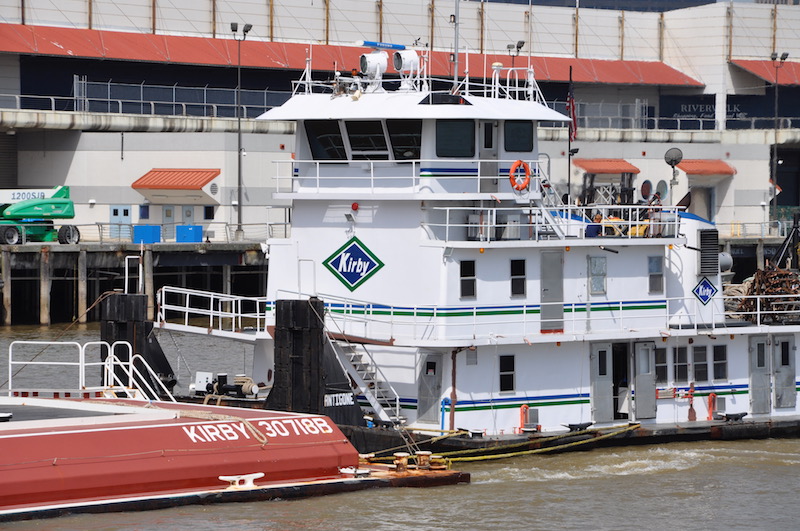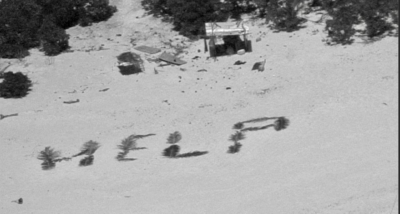The end of record-breaking floods in August returned operations back to normal on the inland rivers and helped increase profitability at Kirby Corp., the nation’s largest tank barge operator, which posted strong third-quarter results.
In its third-quarter earnings release Friday, the Houston-based operator cited several factors for the positive financial report: favorable summer weather, receding floodwaters that produced fewer barging delays, cuts in its manufacturing workforce due to a slowdown in the oil patch, and “enhanced earnings power” from recent investments and acquisitions.
Kirby posted earnings of $48 million, or 80 cents per share in the third quarter ended Sept. 30, compared to $41.8 million or 70 cents per share for the same period last year, David Grzebinski, Kirby’s president and CEO, said in a conference call with investors on Friday.
Total revenues were $667 million, down 5% from last year, but Grzebinski said significant gains were made in its two marine transportation sectors, which are Kirby’s core business moving products along the inland and coastal waterways, with year-on-year improvements in profitability.
This sector generated a robust $413 million in revenue, up 8% over last year due largely to improved operating conditions on the Mississippi River. As floodwaters receded, Kirby was able to reduce operating expenses that were elevated during high water, while barging delays dropped 31% during the quarter compared to the previous quarter.
“This led to efficiencies across our fleet and reduced operating expenses,” Grzebinski said, adding that customer demand and barge utilization remained steady in the low 90% range, and pricing improved year-on-year with spot rates increasing about 15%. Acquisitions of two barge lines — Cenac and CGBM — also played a role in increasing barge fleet capacity more than 30%.
Overall, inland revenues were up 10% year-on-year, while coastal business revenues increased 3%, he said.
The coastal sector experienced good operating conditions and stable barge utilization in the mid-80% range. “Our efforts to modernize and increase the efficiencies of the fleet during the downturn, including purchase of a new articulated tank barge unit, construction of new coastal tugboats , and retirement of aging equipment, are showing benefits and contributing to better reliability and lower costs,” he said. “Overall, coastal operating margins were in the high single digits during the third quarter.”
The company’s manufacturing business, however, was hit hard by a slowdown in the oil patch. A slump in spending and activity there pushed down revenues in Kirby’s distribution and services division by 21% to $254 million from the $323 million posted during the third quarter of 2018. That sector sells and services engines and other equipment for energy industries. Kirby laid off about 40% of its manufacturing workers, citing uncertainties of when business there will recover. “Although we anticipated this slowdown in oilfield spending and that I would have a negative impact on our third quarter results, the magnitude of the decline was significant,” Grzebinski said.
Strong performances in the marine transportation sectors has offset this drop in oilfield business.
Looking forward, fourth-quarter earnings will likely be affected by winter weather, the oil patch slowdown, as well as operational challenges posed by temporary lock closures along the Gulf Intracoastal Waterway and the Illinois River. “Overall, we anticipate the inland market will remain tight with our barge utilization in the low 90 percent range,” he said, while operating expenses will rise as a significant number of barges are scheduled for maintenance.
The coastal market will have stable demand and barge utilization in the mid-80s, he said, but seven vessels are scheduled for major shipyard work which will have a negative impact on revenue and operating income.
Overall, he expects demand for barge services to be stable moving ahead, with strong potential for new business as planned petrochemical plants in the Gulf become operational and need to move products by barge.
“From a supply and demand standpoint, we’re pretty positive because the demand is growing faster than supply,” Grzebinski said. “Of course you’ve got the risk of a recession next year but if you exclude that, things are looking pretty good. And even with the recession, all these new chemical plants are coming along."





